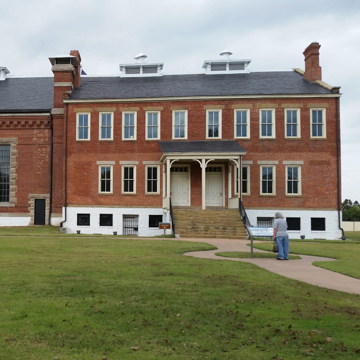This National Historic Site contains the remnants of two frontier forts. In 1817 the federal government built a log fort here on this western frontier to provide protection from Indian attacks. Remains of the foundations of this fort are visible. The army abandoned the fort after a few years but returned in 1836; in 1838, two years after Arkansas’s statehood, the log stockade was replaced by something more substantial. The red brick commissary building of this second fort survives and has been restored, but the officers’ quarters were destroyed in a fire in 1870. General Zachary Taylor, later a U.S. president, took command of the fort in 1841. In the 1850s, the U.S. Army designated the fort as a quartermaster depot. The fort played an important role against the Confederacy in the Civil War and was held by both Confederate and Union forces at different times. After the war, the fort was transferred to the Department of the Interior, and in the early 1870s the surviving building became the federal courthouse for the western district of Arkansas. Inside the old courthouse is the restored courtroom of Judge Isaac Parker, who gained notoriety as the “hanging judge.” In his twenty-one years as judge on the U.S. District Court for Western Arkansas, seventy-nine lawbreakers were hanged. The restored courtroom now serves as the visitor center. A modern replica of the gallows is on the grounds of the site. The site also illustrates the area’s history in markers and memorials, including the route of the forced removal, known as the Trail of Tears, of Native Americans to Indian Territory (present-day Oklahoma).
Nearby, at 320 Rogers Avenue is the Fort Smith Museum of History, housed in a four-story brick former warehouse built in 1907 for the Atkinson-Williams Hardware Company. The museum, initially located in the fort’s old commissary building in order to prevent its demolition, relocated to this warehouse in 1979. Inside are exhibits and artifacts telling the story of the region’s history.


